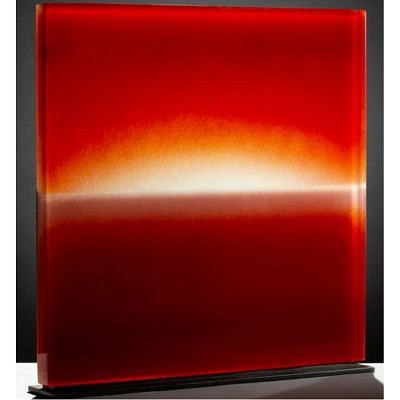(8) Friedrich Campe Intaglio Prints Early 1800's
About Seller
522 South Pineapple Avenue
Sarasota, FL 34236
United States
Sarasota Estate Auction specializes in a wide variety of furniture, antiques, fine art, lighting, sculptures, and collectibles. Andrew Ford, owner and operator of the company, has a passion for finding the best pieces of art and antiques and sharing those finds with the Gulf Coast of Florida.
Two ways to bid:
- Leave a max absentee bid and the platform will bid on your behalf up to your maximum bid during the live auction.
- Bid live during the auction and your bids will be submitted real-time to the auctioneer.
Bid Increments
| Price | Bid Increment |
|---|---|
| $0 | $10 |
| $100 | $25 |
| $250 | $50 |
| $1,000 | $100 |
| $2,500 | $250 |
| $7,500 | $500 |
| $20,000 | $1,000 |
| $50,000 | $2,500 |
| $100,000 | $5,000 |
| $250,000 | $10,000 |
About Auction
Mar 23, 2024
Artists to include: Jorge Blanco, Julius Shulman, Salvador Dali, Picasso, LeRoy Neiman, Henry Moore, Darrell Crisp, Karel Appel, Matisse, Itzchak Tarkay, Kiyoshi Saito, Sharon Boysel, and others. There is also a Knoll Plattner Table, a lot of 7 Original Peanuts Drawings By Reuben Timmins, Rare Books, Art Glass Sculptures, Modern Design and Furniture, Photographs, a Large Collection of Estate Sterling, and so much more! Sarasota Estate Auction sarasotaestateauction@gmail.com
- Lot Description
This lot consists of eight black-and-white intaglio prints by Friedrich Campe that were done in the early 1800's. They were called "Deutsches Classiker", sometimes spelled "Deutsches Klassiker", or "German Classics", and often came from folk lore and fairy tales. They were created in Nuremberg, and why you'll see "Nurnberg bei Fr. Campe" in the lower right corner on many of the plates; "Nurnberg bei Fr. Campe" means "Nuremberg by Friederich Campe". Campe (1777 - 1846) was a German bookseller and publisher from Nuremberg, and most of the intaglios here were published between 1800 and 1825. The prints include a rider on horseback titled "Erlkonig von Gothe", "Luise von Voss", "Der Cosak und der Freiwillige von Kotzebue" (the Cossack and the Volunteer by Kotzebue), Egenhard und Emma von Langhein, another from Luise von Voss, plate No. 550 "Der Gang nach dem Eisenhammer von Schiller", plate No. 554 featuring Lenore von Burger, and an intaglio of a young couple in a field. "The Erlkonig" is an illustration of a poem by Goethe, "Luise" was a poem which portrayed the life of a country pastor's family; we don't know much about "Der Cosak und der Freiwillige von Kotzebue", but Kotzebue (1761 - 1819) was a German dramatist who wrote satirical articles against Napoleon and was forced to flee to Russia after Napoleon won a victory at the Battle of Jena, Kotzebue spoke out against anti-semitism and was murdered in 1819; Yale has this print in its holdings at the Beinicke Library and it was published around 1825. "Egenhard und Emma" was a love story between Emma, daughter of the great emperor Charlemagne, and Eginhard, who was a courtier and private secretary to Charlemagne. Eginhard was a constant companion of the emperor and become an intimate member of the family circle, and the emperor entrusted him with the education of his favorite child, Emma. Naturally Emma and Eginhard fell in love and tried to hide it from the king. One snowy day, they wanted to see each other, but didn't want the king to find out, so Emma carried Eginhard on her back through the snow, to create just one set of tracks, but the king found out anyway, and … "Der Gang nach dem Eisenhammer von Schiller" is an illustration of a ballad by Schiller and means "The Walk to the Iron Hammer". It's another love story nearly gone awry, with the local count ordering a hunter, who covets the count's wife and spreads rumors about her, to be thrown into the oven, but a servant, who is mistaken for the hunter, is grabbed in the hunter's place for doom in the oven; fortunately the servants working with the oven - the iron hammer - seize the scoundrel hunter and send him on his way to the oven - a just reward for the rival. It was done around 1810. Lenore was a poem by Gottfried August Burger that turned into a ballad; she was the fiancé of a soldier who had not returned from war yet and she hoped for his return everyday; she began to quarrel with God and protested it was unfair for other soldiers to return home and not her fiancé; Lenore's mother begged God to forgive her daughter's blasphemy. At midnight, a mysterious stranger posing as her fiance knocked at the door and asked her to go with him to their marriage bed, she gladly hopped on his horse, and the two rode through eerie landscapes, arriving at a cemetery in the morning, when the ghostly rider begins to lose his human appearance and is revealed as Death - a skeleton with a scythe and hourglass - and the marriage bed is the grave of her fiancé. The rider was never a vampire, but the poem had an influence on vampire literature. We don't have much information about the young couple in the field, where the girl is pointing to a flower, but it was done by Campe between 1800 and 1820. Intaglio is a printmaking technique where the image is incised into a surface and the incised line or sunken area holds the ink. It is the direct opposite of a relief print, where the parts that make the image stand above the main surface, and there are five traditional intaglio processes for metal-plate printmaking - engraving, etching, drypoint, aquatint, and mezzotint. Durer, Goya, and Escher were intaglio artists, and Campe too. The outer margins of the prints measure about 8 x 12 7/8 in. wide, with clean images and faint brown spots on some of the margins and light creases or folds here and there, and the backsides are clean. We haven't found prices for the black-and-white intaglios, but colored intaglios for this series go for about $70 to $100 each #5134 Location U4
- Shipping Info
-
SHIPPING INFORMATION·
Sarasota Estate Auction IS NOT RESPONSIBLE FOR SHIPPING! BUYER MUST ARRANGE SHIPPING. All shipping will be handled by the winning bidder. Sarasota Estate Auction recommends obtaining shipping quotes before bidding on any items in our auctions. To obtain a quote, please email info@premiershipment.com. Be sure to include the lot you are interested in and address you would like the quote for. Refunds are not offered under any circumstances base on shipping issues, this is up to the buyer to arrange this beforehand.
BIDDER MUST ARRANGE THEIR OWN SHIPPING. Although SEA will NOT arrange shipping for you, we do recommend our preferred shipper Premier Shipping & Crating at info@premiershipment.com You MUST email them, please DO NOT CALLl. If you'd like to compare shipping quotes or need more options, feel free to contact any local Sarasota shippers. You can email any one of the shippers below as well. Be sure to include the lot(s) you won and address you would like it shipped to. Brennan with The UPS Store #0089 - 941-413-5998 - Store0089@theupsstore.com AK with The UPS Store #2689 - 941-954-4575 - Store2689@theupsstore.com Steve with The UPS Store #4074 - 941-358-7022 - Store4074@theupsstore.com Everett with PakMail - 941-751-2070 - paktara266@gmail.com
-
- Payment & Auction Policies
-
Available payment options
We accept all major credit cards, wire transfers, money orders, checks and PayPal. Please give us a call at (941) 359-8700 or email us at SarasotaEstateAuction@gmail.com to take care of your payments.
-
- Buyer's Premium



 EUR
EUR CAD
CAD AUD
AUD GBP
GBP MXN
MXN HKD
HKD CNY
CNY MYR
MYR SEK
SEK SGD
SGD CHF
CHF THB
THB





























